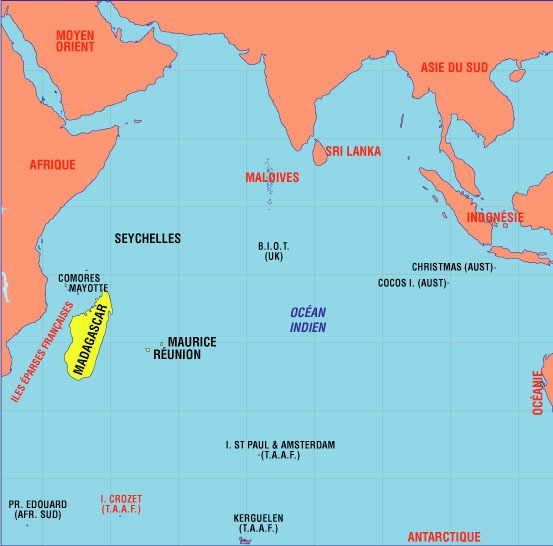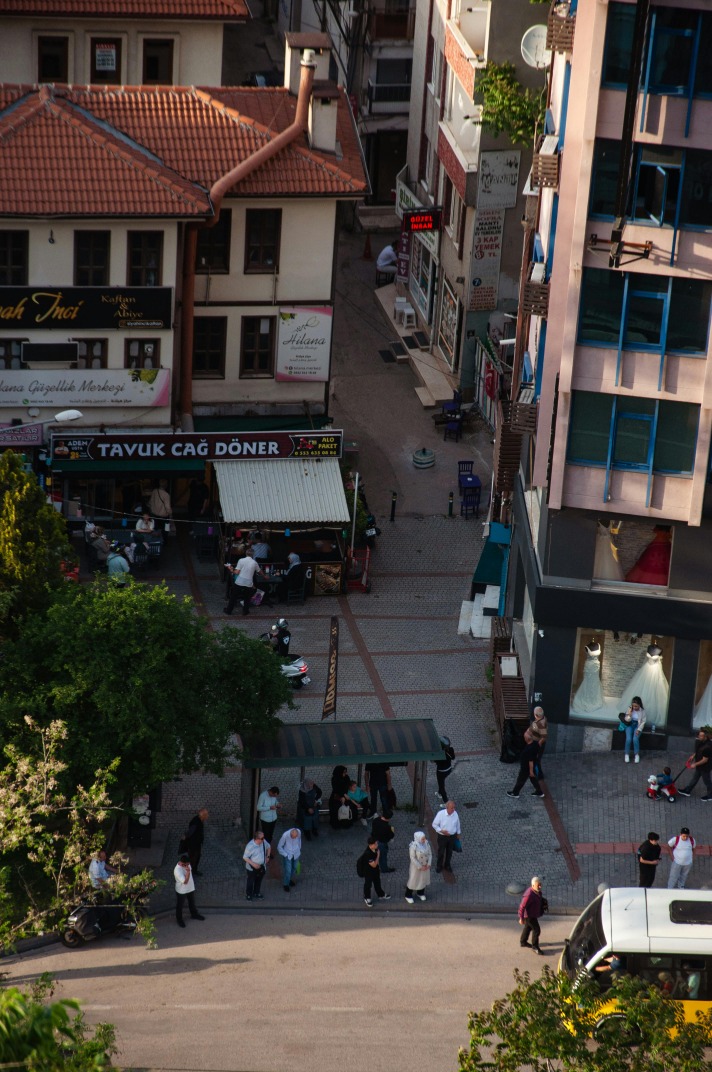Geography and Location
Geography and location play a vital role in shaping the character and development of cities around the world. In the context of cities in Seychelles, understanding their geographical setting provides insight into their unique culture, climate, and economic activities. These cities are situated on islands in the Indian Ocean, offering a distinctive coastal environment that influences their lifestyle and accessibility. Exploring the geography and location of Seychellois cities reveals how their natural surroundings impact daily life and growth.
Geographical Features
The city of Victoria, located on the island of MahÉ at in Seychelles, is characterized by its unique geographical features and strategic location within the Indian Ocean. Surrounded by lush tropical vegetation and situated near the coast, Victoria boasts a picturesque setting with stunning beaches and coral reefs that influence its climate and ecosystem. The city’s position near the equator provides warm temperatures year-round and contributes to the vibrant marine biodiversity of the region. Its geographical features include rolling hills, small islands nearby, and a natural harbor that facilitates maritime activities and commerce. The prominence of Victoria’s location makes it a vital hub for trade, tourism, and cultural exchange within Seychelles and the broader Indian Ocean region.
Climate and Weather Patterns
The city of Victoria, located on the island of Mahé in Seychelles, is known for its unique geography and strategic location in the Indian Ocean. Nestled along the coast, Victoria is surrounded by lush hills and vibrant coastal waters, offering stunning natural scenery and diverse ecosystems. Its position makes it a central hub for commerce and transportation within the archipelago, providing easy access to nearby islands and international routes.
The climate in Victoria is classified as tropical, characterized by warm temperatures and high humidity throughout the year. The city experiences two primary seasons: a hot, humid season from November to March and a cooler, drier season from May to September. During the hotter months, temperatures typically range from 26°C to 31°C (79°F to 88°F), while during the cooler months, they hover around 24°C to 29°C (75°F to 84°F). The relative humidity remains high making the weather feel warmer and more humid.
Weather patterns in Victoria are influenced by the Indian Ocean monsoon system. The warm, moist southeastern trade winds dominate from May to September, bringing cooler and drier conditions, while the warm, moist northwestern winds occur from November to March, bringing rainfall and higher humidity. Heavy showers and storms can occur, especially during the rainy season, but overall, the city enjoys a warm and stable climate suitable for tourism and outdoor activities year-round.
Nearby Islands and Archipelago Overview
The city of Victoria, the capital of Seychelles, is located on the northeastern coast of Mahé Island, the largest island in the Seychelles archipelago. It sits near the Indian Ocean, offering a strategic position amidst a cluster of islands that form the nation’s diverse geography.
Victoria is surrounded by numerous smaller islands that contribute to its scenic beauty and ecological diversity. Some nearby islands include:
- Île aux Cerfs, known for its beaches and water sports
- Île Coco, a small island famous for its vibrant coral reefs
- Île Souris, a secluded island offering tranquility and birdwatching
- Île Moyenne, part of the inner islands with rich marine life
- Île Praslin, home to Vallee de Mai, a UNESCO World Heritage site, located northwest of Mahé
Additionally, the Seychelles archipelago consists of over 115 islands, categorized mainly into Inner Islands and Outer Islands. The Inner Islands, including Mahé, Praslin, and La Digue, are the most populated and well-known, featuring lush landscapes and beaches. The Outer Islands are more remote, often uninhabited, and comprise atolls and coral islands scattered across the Indian Ocean, forming an extensive and diverse archipelago. This geographic setting makes Seychelles a unique destination for nature lovers and travelers seeking pristine environments and tropical beauty.
Historical Background
The history of cities in Seychelles offers a fascinating glimpse into a blend of diverse cultures and colonial influences. Over the centuries, these urban areas have evolved from small settlements to vibrant centers of commerce and community. Understanding their historical background helps to appreciate the unique character and development of Seychellois cities today, shaped by a rich tapestry of traditions, migrations, and economic changes.
Colonial Past and Cultural Influences
The city in Seychelles, Victoria, has a rich historical background shaped by its colonial past and diverse cultural influences. Established as a strategic port during the 19th century, it served as a crucial hub for trade and maritime activities, attracting settlers from various regions. The colonial era, primarily under British rule, left a lasting impact on the city’s architecture, infrastructure, and administrative structure. Over time, Victoria evolved into a melting pot of cultures, reflecting a blend of African, European, and Asian traditions. This multicultural heritage is evident in the city’s local festivals, cuisine, and daily life, making Victoria a unique reflection of Seychelles’ complex historical journey. The interplay of these influences continues to shape the city’s identity and cultural landscape today.
Historical Landmarks and Sites
The city of Victoria, Seychelles, boasts a rich historical background rooted in its colonial past and maritime significance. Established as a key port during the 19th century, Victoria has evolved into a vibrant center of cultural and historical heritage. Its strategic location contributed to its development as a hub for trade and exploration, shaping much of its historic identity.
Throughout its history, Victoria has preserved numerous landmarks and sites that reflect its diverse cultural influences. These sites offer visitors a glimpse into the city’s past and its unique blend of African, European, and Asian heritage.
- Clock Tower: Often called “Little Ben,” this iconic clock tower was built in 1903 and serves as a symbol of Victoria’s colonial history.
- Victoria Market: Established in the late 19th century, this bustling market has been the heart of local commerce and culture for over a century.
- Mission Lodge Lookout: Offering panoramic views, this historic site was once a school for former slaves and is significant for its connection to Seychelles’ colonial education history.
- Seychelles National Museum: Housed in a former colonial hospital, this museum presents exhibits on Seychelles’ history, culture, and natural environment.
- Old Government House: An important colonial building that played a role in the administrative history of the island nation.
Evolution Over Time
The city of Victoria, located on the island of Mahé in Seychelles, has a rich historical background that reflects the broader colonial and maritime history of the region. Established as a settlement in the 18th century, Victoria grew around a natural harbor that facilitated trade and communication among sailors and settlers. Over time, it became the administrative and economic center of Seychelles, experiencing various influences from French, British, and local cultures. The city’s development was shaped by its strategic position along important maritime routes, contributing to its vibrant history as a port city. Throughout the years, Victoria has evolved from a small colonial outpost into a bustling capital, maintaining its significance as the hub of political, social, and commercial activities in Seychelles. Its historical evolution is marked by architectural changes, cultural exchanges, and the growth of its infrastructure, which together tell the story of a resilient city rooted in its diverse heritage.
Demographics and Population
The demographics and population of cities in Seychelles provide valuable insights into the social and cultural fabric of these vibrant urban areas. Understanding the distribution, diversity, and growth patterns of residents helps to shape effective urban planning and development strategies. As Seychelles’ cities evolve, their demographic characteristics reflect both historical influences and contemporary trends that influence daily life and future prospects.
Population Size and Density
The city in Seychelles, which serves as a central hub for economic and cultural activities, has a diverse demographic profile characterized by varying population sizes and densities. Understanding these aspects provides insights into the urban development and societal structure of the city.
- Population Size: The city has experienced steady growth over the years, with an estimated population that reflects both local residents and expatriates. The size of the population influences infrastructure, service demands, and urban planning strategies.
- Population Density: Due to limited land area and high urbanization rates, the city exhibits a relatively high population density. This density impacts housing, transportation, and access to public services, shaping daily life for its inhabitants.
- Demographics: The demographic composition includes a mix of Seychellois locals and international residents, with diverse age groups and cultural backgrounds. This diversity enriches the social fabric of the city, fostering a vibrant community.
Ethnic Composition and Languages
The city in Seychelles boasts a diverse demographic and population profile, reflecting a rich blend of cultures and histories. Its population is composed of various age groups, with a balanced mix of young families, working adults, and elderly residents, contributing to a vibrant community life. The ethnic composition is equally diverse, influenced by historical migrations and colonial interactions, resulting in a mosaic of African, European, and Asian ancestries.
Languages spoken in the city are equally varied. Although Seychellois Creole is the most widely spoken language and a key element of national identity, English and French are also commonly used in official, educational, and daily communication. This multilingual environment underscores the multicultural heritage of Seychelles and fosters an inclusive atmosphere within the city.
Religious and Cultural Diversity
The city in Seychelles is known for its vibrant demographics and rich cultural tapestry. Its population consists of a diverse mix of ethnicities, religions, and cultural backgrounds, reflecting the island nation’s history of migration and global connections.
- Ethnic Composition: The population includes Seychellois of African, French, Indian, Chinese, and European descent, creating a multicultural environment.
- Population Growth: The city’s population has been steadily increasing due to migration and urbanization, contributing to a dynamic community.
- Languages Spoken: Creole, English, and French are commonly used, with Creole serving as the national lingua franca.
Religious and cultural diversity are integral to the city’s identity. Various religious communities coexist peacefully, celebrating their unique traditions and festivals. The cultural landscape is enriched by music, dance, cuisine, and crafts from different regions, making the city a vibrant hub of cultural expression.
- Religious Groups: Primarily Christian (including Catholic and Protestant denominations), along with smaller communities of Muslims, Hindus, and Buddhists.
- Cultural Celebrations: Festivals like Creole Festival, Christmas, Eid, and Diwali highlight the diverse religious and cultural heritage.
- Culinary Diversity: The local cuisine reflects a blend of influences, with dishes incorporating flavors from Africa, France, India, and Asia, showcasing the city’s multicultural character.
Economy and Industry
The economy and industry of Seychelles play a vital role in shaping the city’s development and overall prosperity. As an island nation renowned for its natural beauty, Seychelles relies heavily on tourism, fishing, and small-scale agriculture. These sectors not only provide employment opportunities but also contribute significantly to the country’s GDP. Understanding the dynamics of Seychelles’ economy and industry provides insight into its growth potential and the challenges it faces in maintaining sustainable development.
Tourism Sector
The economy and industry of Victoria, the capital city of Seychelles, are primarily driven by tourism, government services, and small-scale manufacturing. As a major hub for visitors exploring the islands, Victoria benefits significantly from the influx of international tourists, which sustains various sectors of the local economy.

- Tourism is the backbone of Victoria’s economy, with numerous hotels, resorts, and hospitality services catering to visitors seeking Seychelles’ renowned beaches and natural beauty.
- Fisheries and marine industries also contribute to local income, supporting both commercial fishing activities and related processing factories.
- Government services and administrative functions provide employment opportunities and support local infrastructure development.
- Small-scale manufacturing, including handicrafts and local produce, aids in boosting the city’s economy and promoting cultural heritage.
The tourism sector in Victoria continues to expand, focusing on sustainable practices to preserve Seychelles’ ecological attractions, which remain central to its economic success. As a result, the city is gradually diversifying its industry base while maintaining its reputation as a premier travel destination.
Fishing and Marine Industry
The economy of the city in Seychelles heavily relies on the thriving fishing and marine industry, which has been a cornerstone of its development for decades. Given its strategic location in the Indian Ocean, the city benefits from rich marine resources that support both local livelihoods and export activities. The fishing sector primarily focuses on species such as tuna, tuna-like species, and other pelagic fishes, contributing significantly to the national economy. Additionally, tourism and marine-related industries play an essential role, attracting visitors interested in water sports, diving, and marine conservation efforts. The city continues to invest in sustainable fishing practices and marine infrastructure to ensure long-term economic growth and environmental preservation. Overall, the synergy between the fishing industry and the broader marine economy remains vital to the city’s prosperity and sustainability.
Agriculture and Local Products
The city in Seychelles boasts a vibrant economy primarily driven by tourism, hospitality, and the sustainable use of local resources. Its strategic location and natural beauty attract visitors from around the world, supporting a thriving service industry. Additionally, small-scale industries and local enterprises contribute to the city’s economic resilience, fostering a diverse commercial landscape.
Agriculture plays a significant role in the local economy, with efforts focused on cultivating spices, fruits, and vegetables suited to the tropical climate. While modern agriculture is less dominant, traditional farming practices remain essential for community sustenance and local markets. This agricultural sector also supports the production of unique local products that are culturally significant.
Local products from the city include handcrafted souvenirs, spices, coconuts, vanilla, and raffia crafts, which are highly valued both domestically and internationally. These products highlight the rich cultural heritage and the natural bounty of Seychelles, offering visitors authentic local experiences and contributing to the sustainable development of the region.
Transportation and Infrastructure
Transportation and infrastructure are vital components that support the growth and development of any city. In a city in Seychelles, these elements play a crucial role in connecting residents, visitors, and businesses, ensuring smooth movement and accessibility across the region. Efficient transportation networks and well-maintained infrastructure enhance the city’s overall functionality and help promote sustainable development in this beautiful island nation.
Transportation Systems and Accessibility
Transportation and infrastructure are vital components in the development of a city in Seychelles, ensuring effective mobility and connectivity for residents and visitors alike. The city benefits from a combination of road networks, public transportation options, and maritime links that support daily commutes and economic activities. Typically, the road infrastructure is designed to accommodate both private vehicles and public buses, facilitating movement across different neighborhoods and to key commercial and recreational areas.
Transportation systems in Seychelles’ urban centers also include ferries and boat services connecting various islands, which are crucial given the archipelagic geography of the country. These maritime routes enhance accessibility to remote islands and promote tourism. Efforts to improve transportation infrastructure focus on expanding and maintaining roads, enhancing public transit services, and developing sustainable options that reduce environmental impact. Accessibility in the city is prioritized through pedestrian-friendly pathways, bike lanes, and facilities for persons with disabilities, ensuring inclusivity and ease of movement for all residents and visitors. Overall, an integrated and resilient transportation system is essential for fostering economic growth, improving quality of life, and supporting the sustainable development of the city in Seychelles.
Ports and Shipping Facilities
Port Victoria, located in the city of Victoria in Seychelles, serves as the primary transportation hub for the country. It is a vital gateway for maritime trade, passenger ferries, and cruise ships, facilitating connectivity between Seychelles and international destinations. The port features modern facilities equipped to handle a variety of vessel sizes, ensuring efficient cargo handling and port operations.
The city also boasts well-developed shipping facilities that support both commercial and tourism activities. The infrastructure includes cargo terminals, refueling stations, and maintenance services, all designed to promote smooth and safe maritime activities. These facilities play a crucial role in boosting the local economy by enabling the swift movement of goods and people within and outside the archipelago.
Transportation within Victoria is supported by a network of roads connecting various parts of the city and neighboring islands. Public transportation, including buses and taxis, provides accessible and reliable services for residents and visitors alike. Continuous improvements to transport infrastructure aim to enhance connectivity, promote sustainable development, and support the growth of Seychelles as a welcoming destination for tourism and international trade.
Public Services and Utilities
Transportation and infrastructure in cities across Seychelles play a vital role in connecting communities and supporting economic activities. The primary mode of transportation includes paved roads, ferries, and domestic flights, facilitating movement within islands and to neighboring regions. Well-maintained road networks are essential for daily commutes and the transportation of goods, while marine transport connects various islands and provides access to remote areas.
Public services such as healthcare, education, and emergency response are crucial for ensuring the well-being of residents. Clinics and hospitals are mainly concentrated in urban centers, offering essential medical facilities. Educational institutions range from primary schools to higher learning establishments, providing residents with access to quality education. Emergency services, including fire and police departments, maintain safety and respond promptly to incidents.
Utilities and public infrastructure support the residents’ daily needs through reliable supply of water, electricity, and waste management. Water supply systems are developed to serve urban populations, with efforts to improve access in more remote communities. Electricity is mainly generated through renewable sources such as solar and wind energy, aligning with Seychelles’ commitment to sustainability. Waste management services include collection, recycling, and disposal, helping to preserve the environment and maintain urban cleanliness.
Tourist Attractions and Landmarks
Discover the captivating world of Seychelles, a stunning island city renowned for its unique blend of natural beauty and cultural heritage. From pristine beaches and lush rainforests to historic landmarks, Seychelles offers a diverse array of tourist attractions that captivate travelers from around the globe. Explore the iconic sites that define the city’s charm and experience the unforgettable essence of this tropical paradise.
Historical and Cultural Sites
The city of Victoria, the capital of Seychelles, is rich in tourist attractions and landmarks that highlight its unique cultural and historical heritage. Visitors can explore the vibrant Seychelles National Botanical Gardens, which showcases native and exotic plants, and offers insight into the island’s botanical history. The Sir Selwyn Selwyn-Clarke Market is a bustling hub where travelers can experience local life and purchase fresh produce, spices, and handicrafts. Historical sites such as the National Museum of History provide a glimpse into Seychelles’ past, exhibiting artifacts and memorabilia that tell the story of the islands’ colonial era. Additionally, the Clock Tower, inspired by London’s Little Ben, stands as a recognizable landmark symbolizing Victoria’s colonial history. The nearby Hindu Temple and other religious sites reflect the cultural diversity of the city, making Victoria a captivating destination for those interested in exploring Seychelles’ rich cultural tapestry.
Natural Wonders and Beaches
The city in Seychelles offers a stunning array of attractions that captivate visitors from around the world. Its vibrant landmarks and picturesque natural wonders make it a sought-after destination for travelers seeking both cultural and outdoor experiences.
Tourist attractions in the city include historic sites, bustling markets, and charming neighborhoods that reflect the rich heritage of Seychelles. Notable landmarks such as colonial-era buildings and traditional markets provide insight into the local history and way of life.
Natural wonders abound in the area, with lush parks, botanical gardens, and scenic viewpoints providing breathtaking vistas of the surrounding landscape. The city is also a gateway to exploring the diverse ecosystems of Seychelles, including protected reserves and wildlife sanctuaries.
Beaches in Seychelles are renowned for their pristine beauty, featuring soft white sands and crystal-clear waters. Visitors can enjoy relaxing sunbaths, swimming, snorkeling, or diving in the vibrant marine environment. These beaches often serve as idyllic spots for both adventure and serenity amidst the natural splendor of Seychelles.
Activities and Tours
Discover the stunning city of Victoria in Seychelles, a charming destination full of attractions and activities for every traveler. Visitors can explore the vibrant local markets, such as Sir Selwyn Selwin Clarke Market, where fresh fruits, spices, and handmade crafts abound. The city is also home to iconic landmarks like the Victoria Clock Tower, a symbol of the island’s colonial heritage, and the Botanical Gardens showcasing diverse flora native to Seychelles.
Embark on exciting tours and outdoor adventures, including boat trips to nearby islands, snorkeling, and diving excursions to observe colorful marine life. Nature enthusiasts can enjoy guided walks through lush rainforests or visit the National Museum of History to learn about Seychelles’ rich cultural heritage. For a unique experience, visitors can take a scenic birdwatching tour or enjoy a sunset cruise along the coastline. With its blend of natural beauty, cultural landmarks, and engaging activities, Victoria offers a memorable experience for every visitor.
Culture and Traditions
City life in Seychelles offers a vibrant tapestry of culture and traditions that reflect the island’s diverse history and influences. From colorful festivals to local crafts, the city showcases a rich blend of customs that celebrate the unique identity of Seychelles. Exploring these traditions provides a glimpse into the heart and soul of this beautiful island nation.
Festivals and Celebrations
Victoria, the capital city of Seychelles, is a vibrant hub rich in culture and traditions that reflect the diverse heritage of the islands. The city hosts numerous festivals and celebrations throughout the year that showcase local music, dance, cuisine, and craft traditions. One of the prominent events is the Seychelles International Carnival, which features colorful parades, traditional costumes, and lively performances that bring the community together in joyous celebration. The annual Creole Festival is another highlight, celebrating Seychelles’ Creole culture with traditional music, dance, and food, emphasizing the island nation’s history and multicultural influences. Local markets and community gatherings also play a vital role in preserving and promoting the cultural practices of the Seychellois people. These festivals and traditions not only reflect the city’s vibrant cultural identity but also attract visitors eager to experience the authentic spirit of Seychelles.
Local Cuisine and Culinary Customs
The city in Seychelles offers a rich tapestry of culture and traditions that reflect a blend of African, European, and Asian influences. This diverse heritage is celebrated through vibrant festivals, lively music, and colorful art, creating a unique cultural atmosphere that residents and visitors alike cherish.
Local cuisine in Seychelles is characterized by its fresh seafood, tropical fruits, and aromatic spices. Dishes such as grilled fish, kari poule (Chicken Curry), and coconut rice showcase the island’s abundant natural ingredients and culinary creativity. Markets and street stalls are popular spots for locals and tourists to enjoy authentic and flavorful meals that embody the island’s culinary traditions.
Culinary customs in Seychelles often involve communal eating and sharing dishes, emphasizing hospitality and togetherness. Festivals and special occasions feature traditional dances and music, enhancing the cultural experience. The fusion of flavors and the warm hospitality are essential elements of the city’s vibrant culinary scene, reflecting the deep-rooted traditions of the Seychellois people.
Arts, Music, and Dance
The city of Victoria in Seychelles is a vibrant hub that reflects the rich culture and traditions of the island nation. Residents and visitors alike enjoy the blending of indigenous customs with colonial influences, creating a unique cultural tapestry. Festivals and public celebrations often showcase traditional Seychellois music, dance, and arts, emphasizing community spirit and heritage.
Arts in Victoria are characterized by colorful crafts, intricate wood carvings, and vibrant paintings that capture the island’s natural beauty and cultural stories. Local artisans preserve age-old techniques, passing them down through generations, and their work often features motifs inspired by Seychelles’ flora and fauna.
Music and dance are integral to Seychellois culture, with genres like moutya and sega bringing people together during festivities and social gatherings. These lively rhythms are accompanied by energetic dance movements that tell stories of history, love, and daily life, creating an engaging and authentic cultural experience for all who participate.
Environmental Conservation and Challenges
Environmental conservation is vital for maintaining the health and sustainability of cities around the world, including those in Seychelles. As urban areas continue to grow, they face numerous challenges such as pollution, deforestation, and habitat destruction. Protecting natural resources while supporting urban development is essential to preserve the unique biodiversity and scenic beauty of Seychelles cities for future generations.
Protected Areas and Biodiversity
The city of Victoria in Seychelles is increasingly recognized for its rich biodiversity and the importance of environmental conservation efforts. As an island city, Victoria faces unique challenges related to maintaining its natural habitats amidst urban expansion and tourism development. Protecting the local flora and fauna is essential to preserving the ecological balance and ensuring sustainable growth for future generations.
Protected areas within Victoria and its surroundings play a crucial role in conserving the region’s biodiversity. These areas serve as sanctuaries for endemic species and provide opportunities for ecological research and eco-tourism. However, the city also encounters challenges such as habitat destruction, pollution, and illegal activities that threaten its natural assets.
- Establishing and maintaining protected areas to safeguard native species and ecosystems.
- Addressing urban sprawl and infrastructure development that can lead to habitat loss.
- Combating pollution from tourism, shipping, and local industries.
- Engaging local communities and stakeholders in conservation initiatives.
- Promoting education and awareness regarding the importance of biodiversity and environmental protection.
Efforts to balance urban growth with environmental conservation in Victoria are vital for the sustainability of Seychelles’ unique biodiversity. Protecting these natural resources ensures not only ecological health but also supports the city’s eco-tourism industry and the well-being of its residents.
Environmental Issues and Sustainability Efforts
In the city of Victoria, Seychelles, environmental conservation is a vital concern due to its rich biodiversity and fragile ecosystems. The region faces numerous challenges, including deforestation, pollution, and climate change, which threaten both natural habitats and local communities. Efforts are being made to address these issues through sustainable practices, such as protecting marine reserves, implementing waste management systems, and promoting eco-friendly tourism. These initiatives aim to balance development with the preservation of Seychelles’ unique environment, ensuring that future generations can enjoy its natural beauty.
Impact of Tourism on Ecosystem
Environmental conservation in Seychelles, especially in its cities, faces significant challenges due to rapid urbanization and growing tourism. These developments put pressure on local ecosystems, threatening native species and delicate habitats. Efforts to balance development with conservation are crucial to maintaining the natural beauty and biodiversity for which Seychelles is renowned.
Tourism has a profound impact on the ecosystems of Seychellois cities. While it boosts the economy, it also causes environmental degradation if not managed sustainably. Key effects include increased waste production, pollution, habitat destruction, and strain on local resources.
- Habitat Loss: Construction of hotels, resorts, and infrastructure leads to deforestation and destruction of coastal and terrestrial habitats.
- Pollution: Increased waste, sewage, and plastic pollution contaminate land and water sources, harming wildlife.
- Resource Consumption: Tourism-driven demand for fresh water, energy, and food can deplete local resources, affecting residents and ecosystems alike.
- Disturbance to Wildlife: Human activity and noise disturb native species, disrupting migration and breeding patterns.





0 Comments